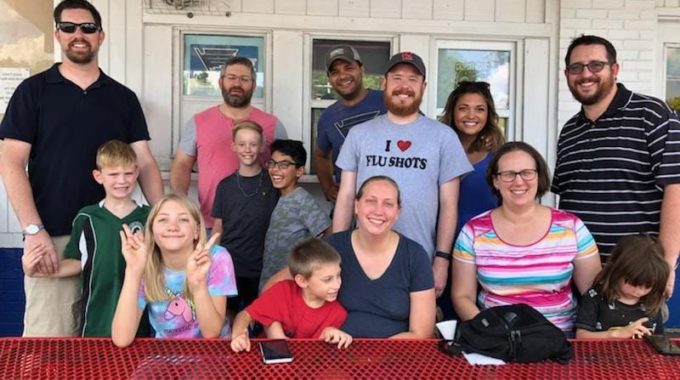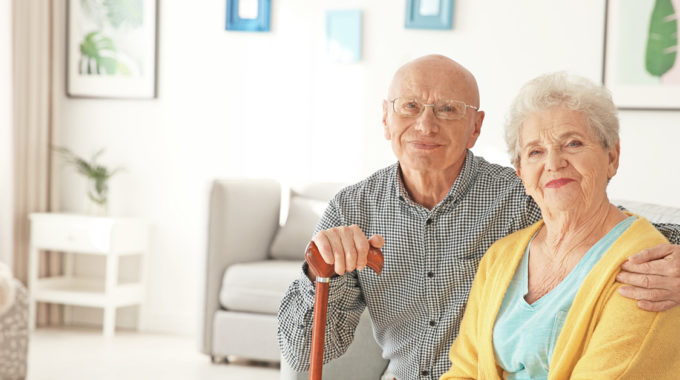
Seniors Lose Muscle Mass at Three Times the Normal Rate During Bed Rest
Flu season is upon us. It begins in October / November, and the peak months span from December to March. During this time of year, more people end up on bed rest. For those of us over age 67, or who care for someone in that age range, it’s important to understand that seniors experience bed rest differently than people in their youth or middle age.
As we get older, we gain strength more slowly from exercise and lose it more quickly from rest. Most people lose roughly 30% of their muscle mass from middle age up. There are ways to prevent age-related strength loss, but when a senior is sick and needs bed rest, that’s a different matter.
What Happens to Strength During Bed Rest?
A normal muscle at complete rest loses up to 15% of its strength each week.1 That is for middle-age people who are not sick. Illness can accelerate this strength loss! Age accelerates the loss of strength as well. During bed rest, leg and trunk muscles atrophy first. These muscles determine gait and posture – two common problem areas for seniors.
Is Bed Rest Worse for Seniors?
It’s easy for healthcare professionals and people of all ages to underestimate the effects of bed rest on seniors. So how much worse is bed rest for seniors? Among a test sample of healthy people age 67+, 10 days of bed rest resulted in more lean tissue loss than 28 days of bed rest caused in younger participants!2,3 In other words, for a senior, a little more than a week of bed rest is about as bad as a month of bed rest would be for a middle-age person. During bed rest, seniors lost strength almost three times as fast, and that doesn’t account for the effects of illness. That was on healthy test subjects.
What Happens to Seniors After Bed Rest?
For patients over the age of 70, bed rest correlates with a major new disability in one out of three prolonged cases.3,4 When bed rest is needed, seniors tend to spend more time than needed in bed or sitting.3 The sudden loss of strength and fitness often causes a lack of self-confidence and fear of self-injury. In some cases, this is rightfully so. After the injury or illness causing bed rest is over, many seniors experience considerable risk associated with the loss of fitness.
How Can Seniors Recover from Bed Rest?
First, families may want to consider non-medical home care during bed rest and for a few months after. This can promote quality of life, provide the peace of mind that encourages greater activity, and mitigate the risk of fall injuries and other problems associated with the period following bed rest.
Most seniors do not fully recover from bed rest in a timely fashion. Rather, they adapt to their newly lowered level of fitness. It doesn’t have to be this way, though. Intensive exercise can improve the odds of full recovery, speed recovery, and prevent injuries that would only compound the problems. Keep in mind that recovery from disuse weakness happens slower than the rate of loss. With intensive exercise, patients require 2.5 weeks of rehab per week of bed rest.5 This may be even longer for seniors who lose strength faster from disuse and gain strength more slowly from exercise. A healthcare professional such as a physical therapist can help seniors develop the most efficient exercise plan and make sure they exercise at the right intensity for rapid recovery.
Home Health Sends Physical Therapy at No Cost to Seniors
In this scenario, it’s important to remember that traditional Medicare pays 100% for home health. This includes in-home physical therapy. When seniors meet Medicare’s definition of homebound, home health can send a whole medical team to help with full recovery from injury or illness.
Conclusion
For seniors, bed rest means that recovery is not over after the injury heals or illness fades. Seniors also need to think about recovering from the strength and fitness loss caused by inactivity. It’s important to not underestimate how disuse affects seniors differently. Non-medical home care can help with activities of daily living to promote activity and safety during and after illness. Medicare-certified home health can send nurses during illness and physical therapists during strength rebuilding, all with Medicare paying 100%. With knowledge and the right team, seniors can reliably get back on track after bed rest.
References:
- Dittmer D, Teasell R. Complications of immobilization and bed rest – Part 1: musculoskeletal and cardiovascu-lar complications. Can Fam Physician. 1993; 39: 1428-1437.
- Karinkanta S, Pirrtola M, Sievanen H, et al. Physical therapy approaches to reduce fall and fracture risk among older adults. Nat Rev Endocrinol. 2010; 6: 396-407.
- Brown C, Redden D, Flood K, Allman R. The unrecognized epidemic of low mobility during hospitalization of older adults. Journal of the American Geriatric Society. 2009; 57 (9): 1660-1665.
- Viccaro L, Parera S, Studenski S. Is timed up and go better than gait speed in predicting health, function, and falls in older adults? J Am Geriatr Soc. 2011; 59 (5): 887-892.
- Muller E. Influence of training and inactivity on muscle strength. Arch Phys Med Rehabil. 1970; 51: 449-62.






